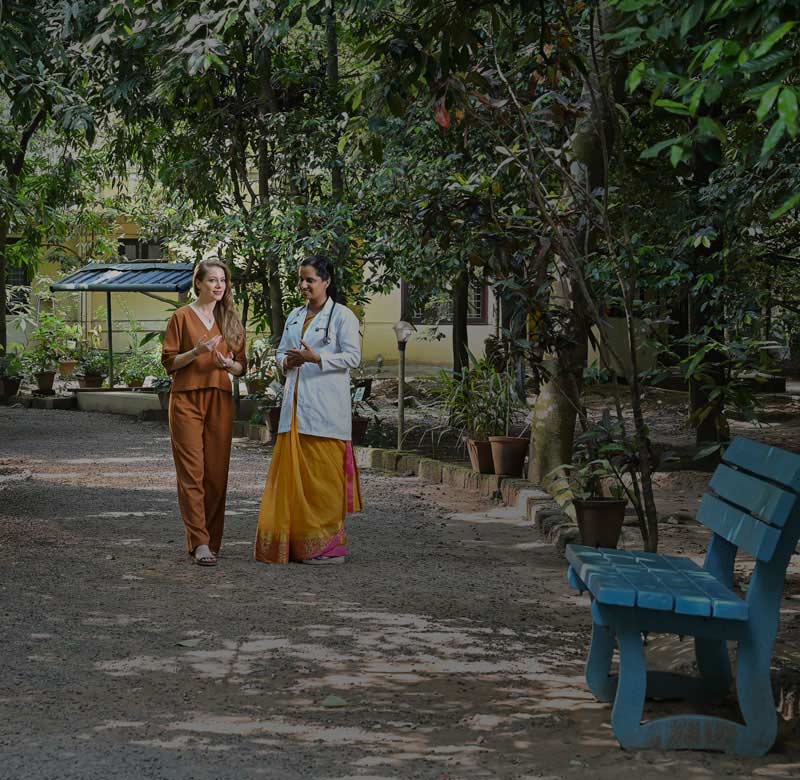







For authentic & scientific
ayurveda
Nagarjuna has developed speciality protocols
and adopted integrated and holistic approaches “to improve
the quality of life of ailing population”.
Eye diseases
Eye diseases encompass a wide range of conditions that can affect various structures of the eye, leading to visual impairments and potential loss of vision. Some of the common eye diseases include refractive errors, age-related macular degeneration (AMD), cataracts, diabetic retinopathy, glaucoma, amblyopia (lazy eye), and strabismus (crossed eyes).
Refractive errors are among the most prevalent eye conditions and include myopia (nearsightedness), hyperopia (farsightedness), astigmatism, and presbyopia (age-related difficulty in focusing up close). Refractive errors occur when the shape of the eye prevents light from properly focusing on the retina, resulting in blurry vision. Corrective measures such as eyeglasses, contact lenses, or refractive surgeries like LASIK can help address these conditions and improve vision.
Age-related macular degeneration (AMD) is a leading cause of vision loss among older adults. It affects the macula, a small area in the center of the retina responsible for sharp central vision. AMD can cause a gradual loss of central vision, making it difficult to perform tasks like reading or recognizing faces. Treatment options for AMD include medications, laser therapy, and certain dietary supplements.
Cataracts occur when the lens of the eye becomes cloudy, leading to blurry or distorted vision. Cataracts commonly develop with age but can also be present at birth (congenital) or result from injury or certain medical conditions. Surgical removal of the cloudy lens and replacement with an artificial intraocular lens (IOL) is the most common treatment for cataracts.
Diabetic retinopathy is a complication of diabetes that affects the blood vessels in the retina. High blood sugar levels can damage the tiny blood vessels, leading to leakage, swelling, and even the growth of abnormal blood vessels. If left untreated, diabetic retinopathy can cause vision loss. Managing diabetes and regular eye examinations are vital for early detection and treatment of diabetic retinopathy.
Glaucoma is a group of eye diseases characterized by damage to the optic nerve, often associated with high intraocular pressure (fluid pressure within the eye). It can gradually lead to vision loss and, if left untreated, may result in permanent blindness. Treatment options for glaucoma include medications, laser therapy, and surgery to reduce intraocular pressure and preserve vision.
Amblyopia, commonly known as lazy eye, is a condition that arises when one eye has significantly better vision than the other. This can occur due to crossed eyes (strabismus), unequal refractive errors, or other factors that prevent proper visual development during childhood. Treatment for amblyopia often involves correcting the underlying cause, along with vision therapy and wearing an eye patch over the stronger eye to encourage the weaker eye's visual development.
Strabismus refers to misalignment of the eyes, causing one or both eyes to deviate inward, outward, upward, or downward. Strabismus can be present from birth or develop later in life. Treatment options include corrective lenses, vision therapy, and, in some cases, surgical realignment of the eye muscles to restore proper alignment.
Regular eye examinations, especially for individuals at higher risk or those experiencing symptoms, are crucial for early detection, timely treatment, and effective management of eye diseases. Eye health maintenance, proper nutrition, UV protection, and adopting healthy lifestyle practices, such as not smoking and managing chronic conditions like diabetes, can also play a significant role in preserving eye health and preventing vision loss.
Please fill up the form to get in touch with us, or contact us for any queries





Terms of use | Privacy Policy | Contact us
Copyright © 2025. All Rights Reserved
Designed & Developed by Websoul Techserve








